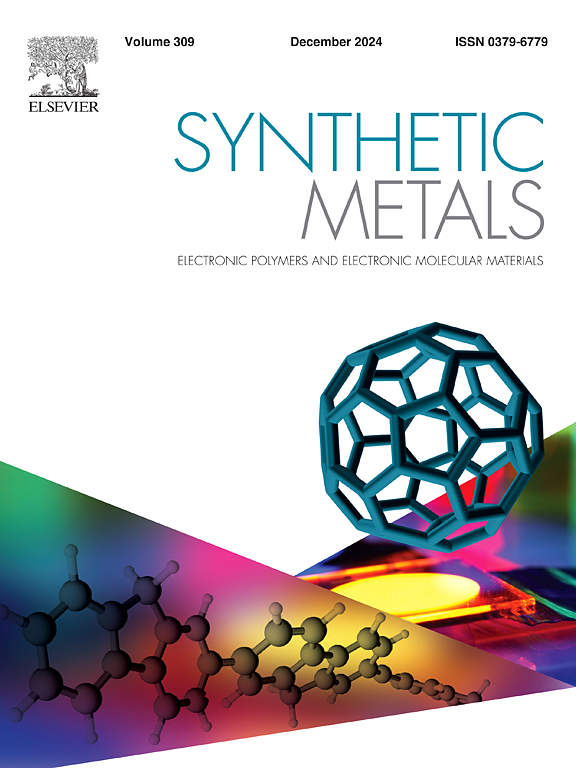Hybrid nanofluids flow in eccentric annuli under contracting and expanding wall motion
IF 4.6
3区 材料科学
Q2 MATERIALS SCIENCE, MULTIDISCIPLINARY
引用次数: 0
Abstract
Nanofluids have been developed as promising thermal transferal fluids due to their enriched thermophysical properties, despite contradictions in reported results and an incomplete understanding of their heat transfer mechanisms. The researchers attempted to employ hybrid nanofluid, which was created by suspending dissimilar nanoparticles in composite or mixture form, as part of their ongoing investigation into nanofluids. The purpose of employing hybrid nanofluid is to improve heat transfer significantly. Modified nanofluid model is the generalized form of hybrid nanofluid and simple nanofluid model. Utilizing a mathematical model, a comparative analysis of nanofluid , hybrid and modified nanofluids flow driven by contracting and expanding mechanism through eccentric annuli. Three distinct nanoparticles are introduced in this instance, significantly improving the base fluid's heat conductivity. For this analysis alumina, copper and nickel are treated as nano-particles and water as a base fluid. The model assumed here is pumping of water mixture filled with different nano-particles through circular eccentric cylinders and it is inspired due to the fact that thread injection is a likely technique for placing medical implants within the human body with least surgical trauma. The conversion of energy in the form of exothermic reaction is assumed to enhance the temperature of eccentric system. Similar to the structure of an artery, the outer cylinder contains a sinusoidal wave that travels down to its boundaries in the form of concentration and relaxation events, while the inner cylinder is invariant, solid, and flowing at a constant velocity. Long wavelength and low Reynolds number approximation is used for analytic solution. The governing non-linear partial differential equations are converted into ordinary differential equations by perturbation technique and are solved by mathematic software. Next we compared graphical significance of nanofluid , hybrid and modified nanofluids for friction forces on inner and outer cylinders, pressure gradient, pressure rise, temperature and velocity profiles for different values of solid volume fractions and average flow rate. At last, trapping boluses are plotted in the form of streamlines by varying inner cylinder radius. The finding indicated that the modified nanofluids enable wider operational flexibility in peristaltic pumps, with superior behavior in both thermal and flow regimes. Pressure gradient increases significantly with nanoparticle concentration modified nanofluids show up to 600 % enhancement compared to mono nanofluids. Temperature profiles peak highest for modified nanofluids, with a 40–60 % boost in thermal performance due to multi-metal synergy (, , ). Modified nanofluids show lowest friction in low-flow regimes and higher friction beyond G > 7.
杂化纳米流体在收缩和膨胀壁面运动下的偏心环空流动
由于其丰富的热物理性质,纳米流体已被开发为有前途的传热流体,尽管报道的结果存在矛盾,并且对其传热机制的理解不完整。作为他们正在进行的纳米流体研究的一部分,研究人员试图采用混合纳米流体,这是通过将不同的纳米颗粒以复合或混合形式悬浮而产生的。采用混合纳米流体的目的是显著改善传热。修正纳米流体模型是混合纳米流体模型和简单纳米流体模型的广义形式。利用数学模型,对比分析了纳米流体(Al2O3−H2O)、混合纳米流体(Al2O3、Cu−H2O)和改性纳米流体(Al2O3、Cu、Ni−H2O)在收缩和膨胀机制驱动下通过偏心环空的流动。在这种情况下,三种不同的纳米颗粒被引入,显著提高了基液的导热性。在这个分析中,氧化铝、铜和镍被视为纳米颗粒,水作为基液。这里的模型假设是泵送充满不同纳米粒子的水混合物通过偏心圆柱,它的灵感来自于这样一个事实,即螺纹注射是一种可能的技术,可以在人体内放置医疗植入物,并且手术创伤最小。假设能量以放热反应的形式转化,提高了偏心体系的温度。与动脉的结构类似,外圆柱体包含一个正弦波,以集中和松弛事件的形式向下传播到其边界,而内圆柱体是不变的,固体的,并以恒定的速度流动。解析解采用长波长低雷诺数近似。采用微扰技术将控制非线性偏微分方程转化为常微分方程,并用数学软件求解。接下来,我们比较了纳米流体(Al2O3−H2O)、混合纳米流体(Al2O3、Cu−H2O)和改性纳米流体(Al2O3、Cu、Ni−H2O)在不同固体体积分数值和平均流速下对内外瓶摩擦力、压力梯度、压力上升、温度和速度分布的图形意义。最后,通过改变内圆柱体半径,以流线的形式绘制出捕获量。这一发现表明,改性纳米流体在蠕动泵中具有更大的操作灵活性,在热和流动状态下都具有优越的性能。压力梯度随着纳米颗粒浓度的增加而显著增加,与单纳米流体相比,改性纳米流体的增强幅度可达600%。改性纳米流体的温度曲线最高,由于多金属协同作用(Al2O3、Cu、Ni),热性能提高了40 - 60%。改性纳米流体在低流量状态下的摩擦最小,在G >; 7之外的摩擦更高。
本文章由计算机程序翻译,如有差异,请以英文原文为准。
求助全文
约1分钟内获得全文
求助全文
来源期刊

Synthetic Metals
工程技术-材料科学:综合
CiteScore
8.30
自引率
4.50%
发文量
189
审稿时长
33 days
期刊介绍:
This journal is an international medium for the rapid publication of original research papers, short communications and subject reviews dealing with research on and applications of electronic polymers and electronic molecular materials including novel carbon architectures. These functional materials have the properties of metals, semiconductors or magnets and are distinguishable from elemental and alloy/binary metals, semiconductors and magnets.
 求助内容:
求助内容: 应助结果提醒方式:
应助结果提醒方式:


